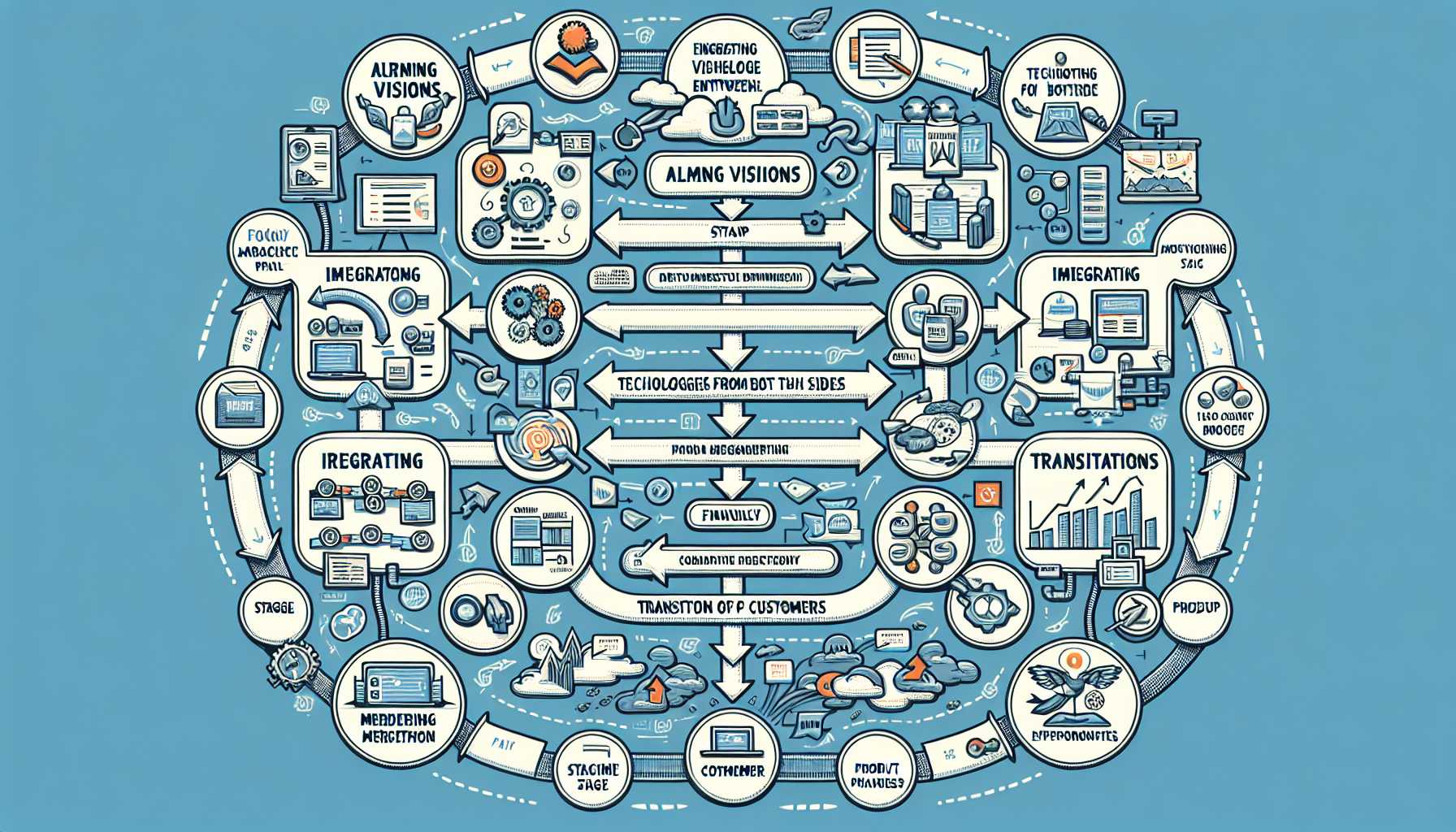
Product mergers and acquisitions (M&A) are exciting yet daunting phases for any tech company. They hold the promise of market expansion, enhanced features, and growth acceleration. However, they come with their own set of intricate challenges and implications for product management. Having navigated several product M&As, I’ve distilled key learnings and strategies for integrating products effectively and efficiently.
Understanding the Product M&A Landscape
When it comes to product mergers, the primary challenges are:
- Product Vision Alignment: Ensuring that the product visions of the acquiring and acquired companies are in harmony.
- Technology Stack Integration: Merging different technology stacks in a way that doesn’t disrupt current operations.
- Customer Impact Minimization: Integrating products without causing significant friction or dissatisfaction for existing customers.
Strategies for a Successful Product M&A
Leveraging my personal experiences with notable product integrations, I’ve found that a combination of strategic planning and tactical execution is vital for success. Here’s how I’ve approached this complex process in the past.
Strategy #1: Aligning Product Visions and Roadmaps
The first step is always to establish a shared vision. In one particular M&A, we started with a series of workshops that brought together leaders and key players from both sides to discuss long-term objectives and product philosophies. Creating a unified product roadmap was crucial, allowing us to identify potential overlaps and gaps. The shared version of the ‘Product Vision Board’ became our north star, guiding integration efforts.
Strategy #2: Managing Technology Stack Complexity
Technology integration can be the most technical challenge during a merger. At a previous company, after the acquisition of a smaller competitor, we conducted an extensive technical audit of both companies’ tech stacks. We decided to adopt a ‘best of both worlds’ approach, where we combined the most robust and scalable elements of each stack. The key was to ensure we didn’t disrupt ongoing operations, rolling out changes incrementally with continuous deployment techniques to minimize risk.
Strategy #3: Prioritizing the Customer Experience
A successful product integration must keep the customer front and center. I recall overseeing an acquisition where the biggest concern was maintaining the customer experience. We accomplished this by establishing a cross-functional team that worked meticulously on a customer communication strategy, outlining the benefits of the merger and how it would enhance their experience. We also implemented a phased feature integration plan, which allowed customers to gradually adapt to changes without overwhelming them.
Navigating Real-World Integration Scenarios
One memorable integration involved merging two complex enterprise products with substantial overlap in functionality. The challenge was deciding which features to keep, enhance, or retire. We tackled this by collecting extensive data on feature usage and customer feedback. This data-driven approach helped us make informed decisions and communicate the rationale behind them to stakeholders and customers alike.
In another scenario, the acquired product had a significantly different customer base. Bridging the gap between the two user groups called for careful segmentation and targeted messaging. We opted to maintain parallel product lines for a period, gradually unifying the underlying technology while customizing the user experience for each segment. This strategy ensured that we catered to the needs of all customers without diluting the value proposition of either product.
Product M&A is a test of product leadership and strategic thinking. By focusing on shared vision, integrating technology thoughtfully, and prioritizing the customer, these transitions can not only be smooth but can also unlock new opportunities for growth and innovation. The measure of success is when customers and internal teams alike see the merger not as a series of disruptions but as a seamless evolution toward a more robust and compelling product offering.
I’ve learned that by embracing these principles with a flexible and open-minded approach, organizations can turn the challenges of product M&A into transformative successes.
